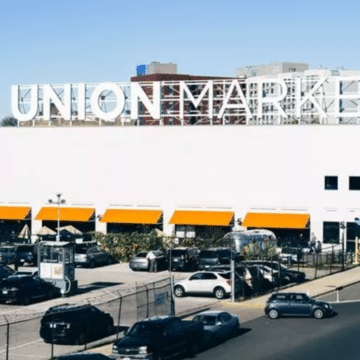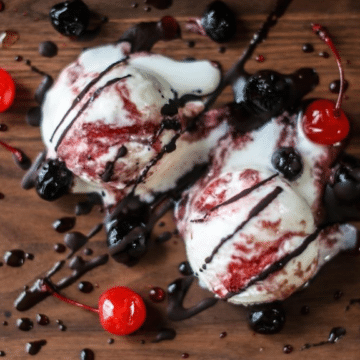
This might be the homeliest-looking bowl of gelato I’ve ever been served by a professional.
The tableware is pristine, classic, magazine-photo-shoot worthy. What confounds is the salted caramel gelato, slumped onto itself, mounded into an irregular blob, a pool of liquid beginning to flood the bottom of the bowl.
And Robb Duncan could not be prouder.
The gelato offers no resistance as I dig in my spoon, then shovel it into my mouth. The flavors wash over my tongue, sweetly mellow dulce de leche punctuated by tingly pops of salt.
Please, sir, may I have some more?
I have just tasted “soft-serve” gelato. It’s what Duncan and Violeta Edelman, married co-founders of the Washington area gelato chainlet Dolcezza, hope will keep customers coming back to their new factory in the burgeoning food scene around Union Market in Northeast. It opened to the public last week, coinciding with the start of spring and the hope of warmer weather, mere days after our latest snowstorm.
Every day, Dolcezza churns out 200 gallons of gelato and sorbetto. Its process of making gelato isn’t that different from anyone else’s. The gelato starts with a weekly supply of about 200 gallons of milk and 30 to 40 gallons of cream from Perrydell Farm and Dairy in York, Pa. The dairy products meld with sugar and other ingredients to create a base that is chilled for more than 24 hours, then poured into a batch freezer for churning. Finally, the gelato goes through a 24-hour tempering process — in other words, freezing — to make it firm enough to scoop into those pretty little globes we’re used to. At the shops, the hardened gelato is held at around 10 degrees.
What’s different is that at the factory, customers can sample gelato that hasn’t been tempered, because the soft-serve is what comes freshly churned out of the machine. Duncan says he’s not aware of anyone else who serves gelato that way.
The idea is that with the gelato at a warmer temperature, roughly 17 to 20 degrees, your tongue won’t be shocked as much by the cold, and you’ll better appreciate the creamy texture, and more.
“You can taste the nuances of the flavor,” Edelman says. “That’s how we like to eat it.”
“What we have is good; it’s great,” Duncan adds, “but this is that times 10.”
Something else that distinguishes Dolcezza: Duncan works on anywhere from 10 to 15 flavors of gelato and sorbetto a day, adding up to around 300 annually. And local ingredients dictate the flavors: May, for example, will bring sorbetto that combines strawberries from Westmoreland Berry Farm and tarragon from Tree and Leaf Farm, both in Virginia. In June, blackberries from Westmoreland will go into one of Duncan’s favorite flavors, blackberries and cream; opal basil from Tree and Leaf will mingle with lemon in another sorbetto. In the fall, Tree and Leaf provides the sweet potatoes for a gelato that is swirled with pecan praline.
The daily mix of what’s available for tasting will vary depending on what ingredients are around. The couple intends to serve the surplus of whatever is coming off the line, with the flavor and production time written on a chalkboard.
“It’s like being in Italy in the back caves and cracking open a fresh wheel of Parmigiano-Reggiano cheese,” Duncan says.
“Cave” might actually be a more apt description for Dolcezza’s previous production space, a 300-square-foot shoebox inside the chain’s original Georgetown location. The sunlight-flooded factory checks in at a comparatively palatial 4,000 square feet, including a 1,000-square-foot mezzanine overlooking the main floor that will serve as office and special-events space.
The new plant leaves room for production expansion. Four subway-tiled bays are set up to house equipment, with three now in use.
Though factory in name and purpose, the facility is hardly industrial in appearance.
“It’s important for us to be in a beautiful space,” Duncan says. “That will be felt in your food.”
The pair collaborated with designer Brian Miller of Edit Lab, part of the Bethesda-based Streetsense firm, injecting the space with personal touches. The wall behind the seating area and coffee bar is covered in wooden produce crates, some turned on their sides to hold tchotchkes and a few of the couple’s cookbooks. “DOLCEZZA” is painted across one row of them.
Duncan takes the credit and/or blame for that. “They call me the crate pirate at the farmers market,” he says.
Several rows of Italian-style tiles in white, blue and green pull the area together, as if you’ve just stumbled into your nonna’s Tuscan kitchen. That is, if your nonna happened to serve knockout gelato and carefully brewed Stumptown Coffee.
Duncan likes to point out various elements procured from Baltimore-based industrial salvage firm Housewerks: the ship lights on the walls, the carts once used by maintenance crews at the Hershey’s chocolate factory. Elsewhere, there are randomly placed vases of flowers and the requisite, albeit tasteful, branded merchandise.
Disparate pieces that come together as a seamless whole, much like the story of Dolcezza itself.
It began in 2000 when Edelman, 35, and Duncan, 42, met in the Amazonian jungle of Brazil at a conference on shamanism and ayahuasca, a psychoactive brew long consumed by the region’s indigenous people.
“We were free spirits,” Edelman recalls. You can almost see the air quotes surrounding the euphemism.
Neither spoke the other’s native language — Spanish in Edelman’s case and English in Duncan’s. For 10 days they muddled through with bits of Portuguese, well enough to prompt them to reunite six months later for a three-month trip down the Amazon and through Brazil.
“The second day we were there, I think, Robb told me he wanted to marry me,” Edelman says.
Of course, Edelman’s mother expected to meet this man, so off they went to Buenos Aires. On their first night in town, Edelman took Duncan to one of the local gelaterias, which are as much, if not more, of a phenomenon in Argentina than in Europe. “He was blown away,” Edelman says. “He told me that same night that we should open a gelateria in the States.”
For years, it remained a pipe dream. Once the couple returned to Washington, they continued their regular work, Edelman in television production and Duncan in software consulting.
Still, the thought of a new career path kept nagging at Duncan. “He wanted to change his life. He wanted to do something else, but he didn’t know what,” Edelman says.
Both Edelman’s and Duncan’s families have invested in the couple’s dream of opening a gelateria. Edelman’s businessman stepfather offered to help procure the Italian-built equipment through an acquaintance. He and Edelman’s mother took a one-week gelato course and packed up some Argentine decor, bound for Washington. Faster than you can say “dulce de leche,” the family had opened the Georgetown location. That was in 2004.
“It was self-taught,” Edelman says. “We had no idea what we were doing.”
Since then, the operation has become even more of a family affair. Duncan’s brother will move to the area soon to help. And in addition to Edelman’s mother and stepfather, her stepsister, sister and brother-in-law have gotten in on the action. So has the couple’s 4-year-old daughter, Pema, who hawks gelato at the Dupont Circle FreshFarm Market. They figure their other daughter, Olive, 2, isn’t far behind.
Edelman says the couple has tried to grow the company organically, whether it’s befriending area farmers to learn about what’s in season and suited for gelato (a strategy that worked well enough for Duncan to amass his crate collection) or raising money with the help of their family and friends, including one friend who invited the couple over for dinner and handed them a $50,000 check to open their second location, in Bethesda, in 2008.
Dolcezza now has additional locations in Dupont Circle and Fairfax’s Mosaic District. A Logan Circle shop is scheduled to open in mid-May.
Even as he developed flavors for the shop and Dolcezza’s more than 100 wholesale clients, Duncan continued to look for outlets for his tinkering. He hit on coffee. Duncan used to live in Portland, Ore., so when the pair began to explore coffee options for their first location, they approached Portland-based Stumptown Coffee Roasters.
Edelman says Stumptown expressed concern about quality control in a cross-country relationship. Dolcezza ended up showcasing several other roasters instead.
With the idea of a coffee lab at the factory percolating, Dolcezza again went to Stumptown, and that time the roasters agreed to a partnership.
“They’re helping us mature our coffee program,” Edelman says. Customers can grab a cup of joe at Dolcezza’s coffee-only pop-up in the Mosaic District, a separate operation from the gelato shop there. Dolcezza will use the lab at the factory as a training ground for its employees. Customers can sample pour-over coffee and espresso alongside their gelato.
I raise the natural question of whether that means patrons will be able to combine these two made-for-each-other items in the classic affogato, a scoop of gelato drowned in espresso.
That sets Duncan off on making one for me, even as I faintly protest, noting that I’ve already had two bowls of gelato.
“We eat it every day,” Edelman reassures me. “It’s low in fat, I swear.”
I’m skeptical, but she says their gelato is 5 percent to 7 percent fat, compared with the 10 percent of some other gelati. (Ice cream has about 10 to 16 percent.)
Duncan plops the affogato in front of me — and this time the gelato really is melting, swirling into the espresso.
He still looks proud.
Originally published here.


